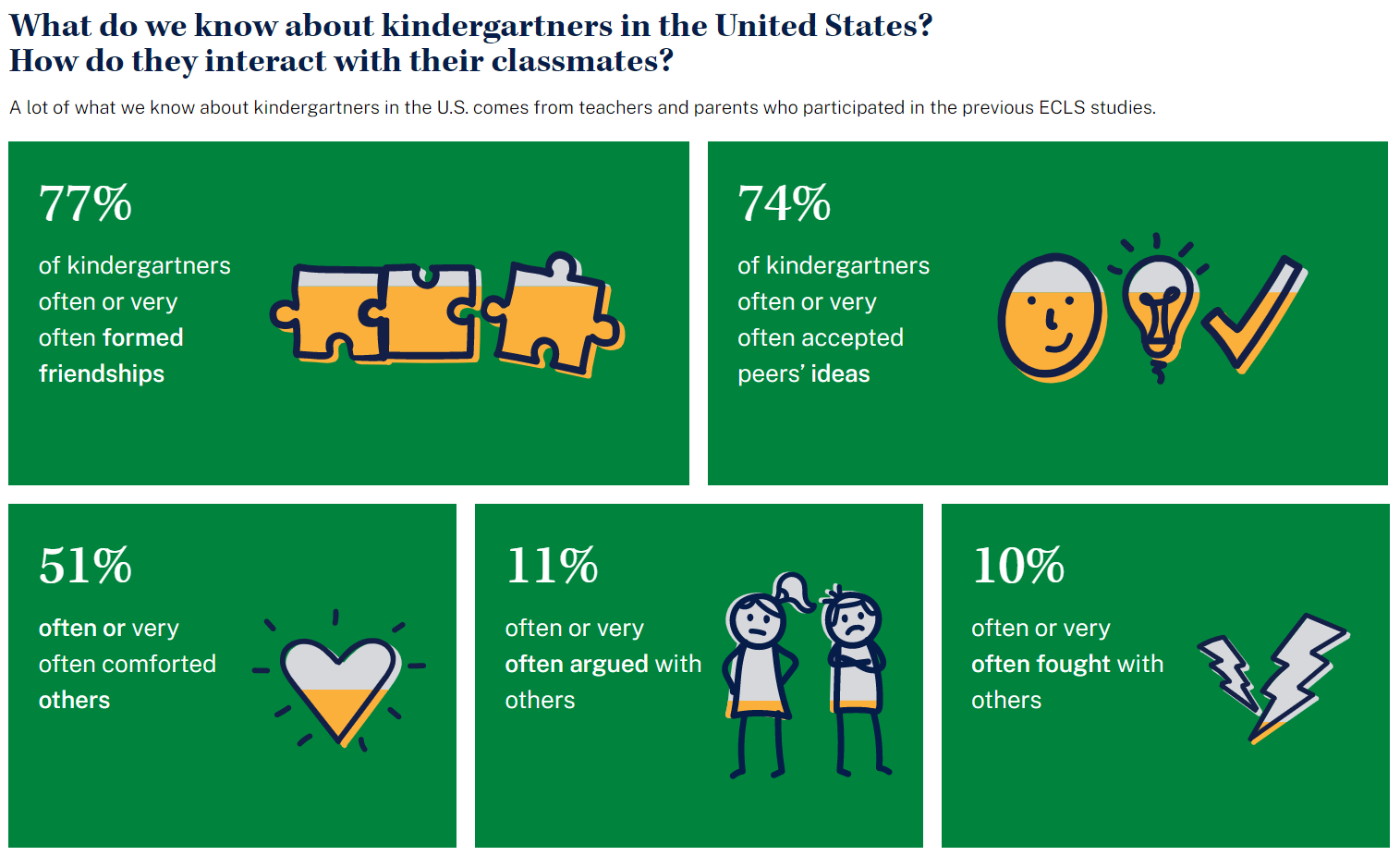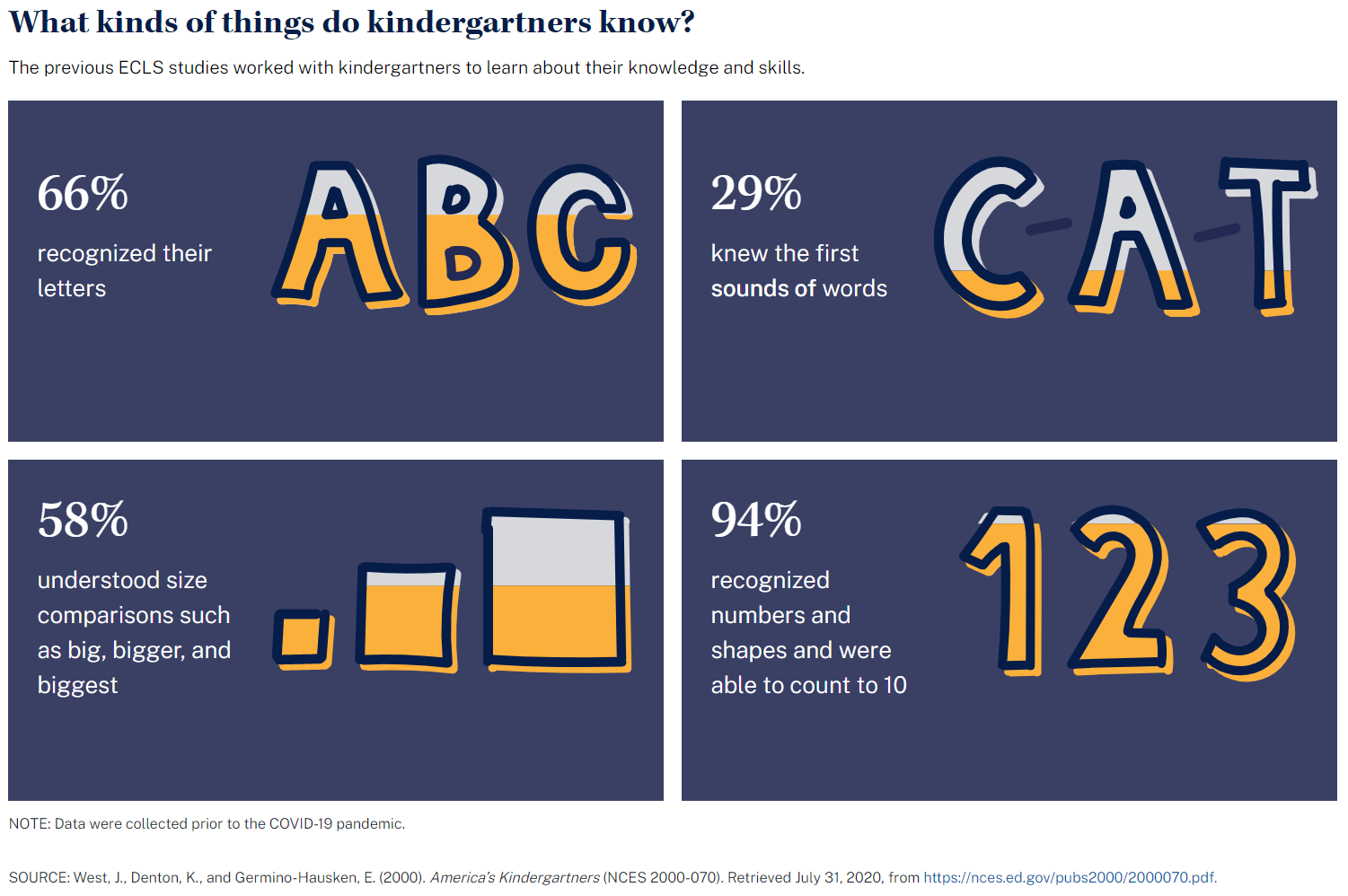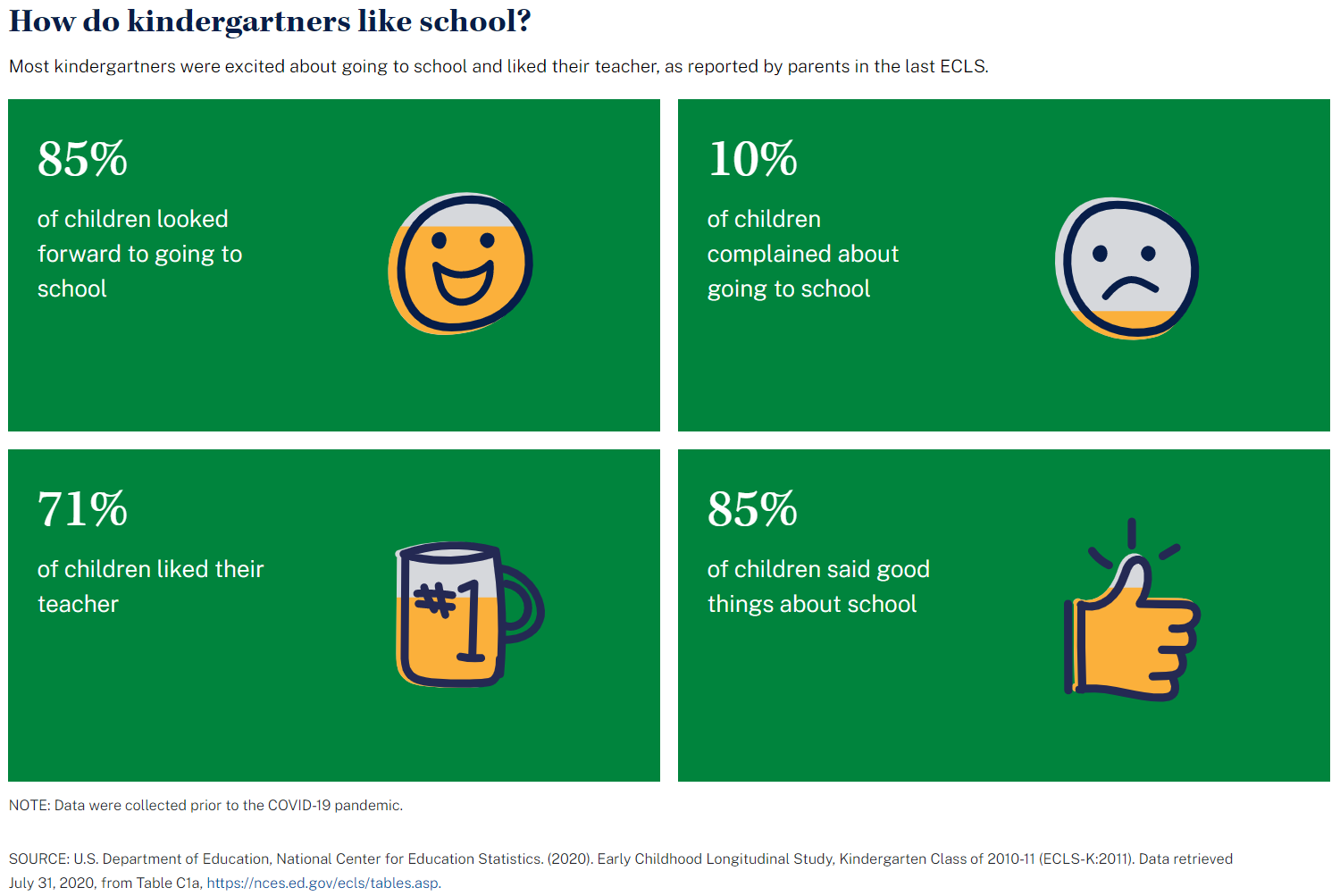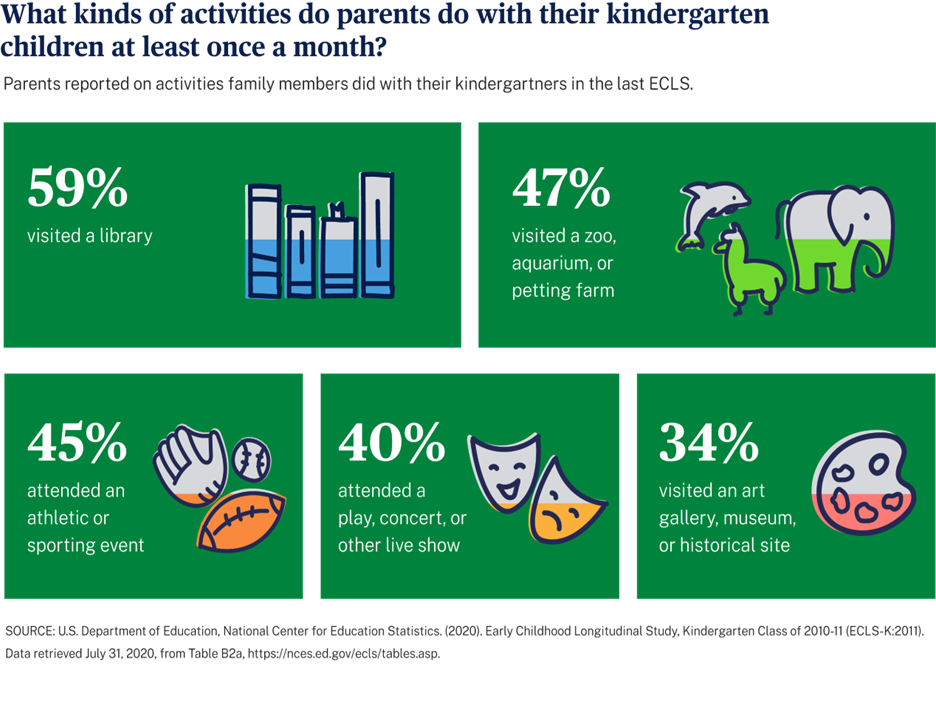Happy Get Ready for Kindergarten Month!
For more than 20 years, the National Center for Education Statistics (NCES) has been collecting information about kindergartners’ knowledge and skills as part of the Early Childhood Longitudinal Studies (ECLS) program.
The first ECLS, the Early Childhood Longitudinal Study, Kindergarten Class of 1998–99 (ECLS-K), focused on children in kindergarten in the 1998–99 school year. At the time the ECLS-K began, no large national study focused on education had followed a cohort of children from kindergarten entry through the elementary school years. Some of today’s commonly known information about young children, such as the information about kindergartners’ early social and academic skills shown in the infographics below, comes out of the ECLS-K. For example, we all know that children arrive at kindergarten with varied knowledge and skills; the ECLS-K was the first study to show at a national level that this was the case and to provide the statistics to highlight the differences in children’s knowledge and skills by various background factors.


The second ECLS kindergarten cohort study, the Early Childhood Longitudinal Study, Kindergarten Class of 2010–11 (ECLS-K:2011), is the ECLS-K’s sister study. This study followed the students who were in kindergarten during the 2010–11 school year. The ECLS-K:2011, which began more than a decade after the inception of the ECLS-K, allows for comparisons of children in two nationally representative kindergarten classes experiencing different policy, educational, and demographic environments. For example, significant changes that occurred between the start of the ECLS-K and the start of the ECLS-K:2011 include the passage of No Child Left Behind legislation, a rise in school choice, and an increase in English language learners.
From the parents of children in the ECLS-K:2011, we learned how much U.S. kindergartners like school, as shown in the following infographic.

The ECLS program studies also provide information on children’s home learning environments and experiences outside of school that may contribute to learning. For example, we learned from the ECLS-K:2011 what types of activities kindergartners were doing with their parents at least once a month (see the infographic below).

What’s next for ECLS data collections on kindergartners? NCES is excited to be getting ready to launch our next ECLS kindergarten cohort study, the Early Childhood Longitudinal Study, Kindergarten Class of 2023–24 (ECLS-K:2024).
Before the ECLS-K:2024 national data collections can occur, the ECLS will conduct a field test—a trial run of the study to test the study instruments and procedures—in the fall of 2022.
If you, your child, or your school are selected for the ECLS-K:2024 field test or national study, please participate! While participation is voluntary, it is important so that the study can provide information that can be used at the local, state, and national levels to guide practice and policies that increase every child’s chance of doing well in school. The ECLS-K:2024 will be particularly meaningful, as it will provide important information about the experiences of children whose early lives were shaped by the COVID-19 pandemic.
Watch this video to learn more about participation in the ECLS-K:2024. For more information on the ECLS studies and the data available on our nation’s kindergartners, see the ECLS homepage, review our online training modules, or email the ECLS study team.
By Jill Carlivati McCarroll, NCES